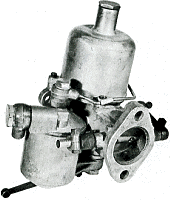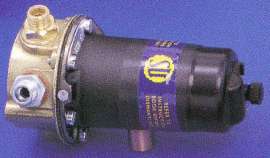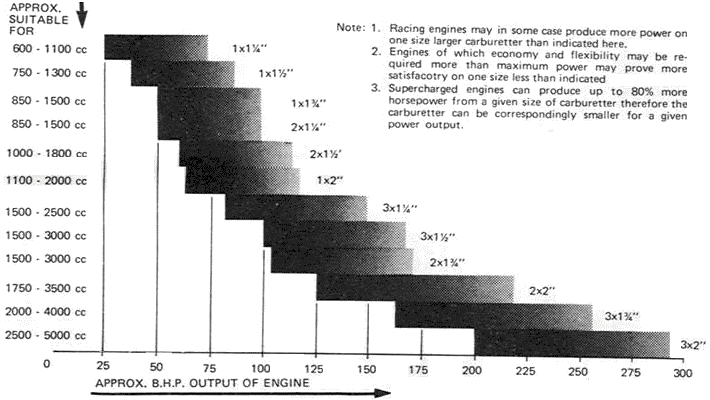The MGA With An Attitude
SKINNERS UNION - HS-115
"SU" Carburetors and Fuel Pumps
At 04:33 PM 1/3/06, Michael Sloan wrote:
>"I'm looking at fuel pumps .... Do you know what the 'SU' is?"
Yes. SU fuel pump is original equipment for the MGA, same as SU carburetors (which came first). "SU" is the manufacturer's trade name.
 The first carburetor in this line was invented by George Herbert (Herb) Skinner who carried three provisional patents for it by 1900. In 1904 he and a younger brother Thomas Carlisle (Carl) Skinner would pool their thoughts on carburation improvements. They ultimately decided that Constant Depression (partial vacuum) and Constant Velocity (air flow speed) were the way to go for more consistent fuel/air mixture with the widely varying flow conditions of the internal combustion engine. A venturi operated moving piston and tapered metering needle were primary components of the first practical design, patent applied for in February in 1905 and granted in January 1906. A third brother John H Skinner joined the group around 1906 (or shortly thereafter) and became director of the company by 1913. Originally branded "The Union Carburetter", it was soon re-named "The SU carburetter", an abbreviation of "Skinner's Union" (the brotherhood). In 1911 company records show directors fees paid to W B Skinner, G H Skinner and J H Skinner, but no G H Skinner. So now there was apparently a fourth brother (but no longer a first brother?). With a move to different factory in 1920, the now better know company name "The SU Company, Limited" was adopted.
The first carburetor in this line was invented by George Herbert (Herb) Skinner who carried three provisional patents for it by 1900. In 1904 he and a younger brother Thomas Carlisle (Carl) Skinner would pool their thoughts on carburation improvements. They ultimately decided that Constant Depression (partial vacuum) and Constant Velocity (air flow speed) were the way to go for more consistent fuel/air mixture with the widely varying flow conditions of the internal combustion engine. A venturi operated moving piston and tapered metering needle were primary components of the first practical design, patent applied for in February in 1905 and granted in January 1906. A third brother John H Skinner joined the group around 1906 (or shortly thereafter) and became director of the company by 1913. Originally branded "The Union Carburetter", it was soon re-named "The SU carburetter", an abbreviation of "Skinner's Union" (the brotherhood). In 1911 company records show directors fees paid to W B Skinner, G H Skinner and J H Skinner, but no G H Skinner. So now there was apparently a fourth brother (but no longer a first brother?). With a move to different factory in 1920, the now better know company name "The SU Company, Limited" was adopted.
To actuate the moving piston, those early carburetors included a rolling bellows made form kid goatskin leather (an adaptation derived from a pre-existing family shoe business). Fuel jet seals also continued to be leather parts for many years. (The widely spread idea that the company name had anything to do with an animal skinners coalition is almost certainly an unfounded rumor). Many more innovations and improvements came into the product over time. After WW-1 (circa 1920) the leather bellows was replaced by a brass piston. In the mid 1920's William Morris (Morris Motors) bought the company. 1929, the HV (horizontal venturi) type carb featured a bottom feed float chamber,
 the "Petrolift" fuel pump (forerunner to the SU electric fuel pump) came to market. 1930, the HV was modified to have a top feed float chamber. 1931, the OM and D type (down-draft) carbs appeared, using a spring in the suction chamber to return the piston to the idle position. 1932, the first SU aero carb for aircraft appeared. 1933, the L type petrol pump was born, and is still in production today. 1936, the company became "SU Carburetters Limited". 1937, the H-type SU carb was introduced with a range of bore sizes from 1-1/8 inch to 2 inches in 1/8 inch increments, then suitable for all applications. 1938, addition of the hydraulic piston damper to improve acceleration enrichment.
the "Petrolift" fuel pump (forerunner to the SU electric fuel pump) came to market. 1930, the HV was modified to have a top feed float chamber. 1931, the OM and D type (down-draft) carbs appeared, using a spring in the suction chamber to return the piston to the idle position. 1932, the first SU aero carb for aircraft appeared. 1933, the L type petrol pump was born, and is still in production today. 1936, the company became "SU Carburetters Limited". 1937, the H-type SU carb was introduced with a range of bore sizes from 1-1/8 inch to 2 inches in 1/8 inch increments, then suitable for all applications. 1938, addition of the hydraulic piston damper to improve acceleration enrichment.

During WW-II, SU produced many aero-carbs for military aircraft as well as fuel pumps for the military. 1942, the petrol injection pump was developed for aero-engines. This design ended up in the hands of an American company, Simmonds Injector Pump.
Post WW-II, 1947, Morris (Lord Nuffield) finally ended the Skinner family connection, but it didn't stop innovative development. 1948, aluminum die-castings replaced zinc and brass. 1950, introduction of dust proofing. 1954, the Delrin float needle appeared. 1963, Nylon floats for HS carbs. 1967, the first of SU's mechanical fuel pumps and an automatic enrichment device. 1969, the spring loaded needle and throttle over-run valve were introduced. 1971, jet temperature compensation (the "wax-stat") appeared. 1972, HIF types surfaced. 1975, the Wax-stat appears on HS4 and HS6 types. 1976, ball-bearing suction chamber/rods were added.
1976, when British Leyland motor Holdings was falling apart, SU was sold into the service and parts division, renamed SU/Butec. 1982, late development added the HIF44E with electronic control of cold start, idle speed and overrun. A few years later SU/Butec dissolved into Austin Rover Fuel systems, and service parts became sporadic. "Burlen Services" (formed in 1971) became involved with SU carbs during the 1974 fuel crisis. 1986, Burlen started trading under Burlen Fuel Systems, and persuaded Dana to keep the tooling operational. Their massive efforts and dedicated input caused the re-emergence of the SU brand. 1988, Hoburn Eaton Group bought SU/Butec, then were absorbed by a USA company Echlin Corporation, who were later swallowed by Dana Corporation (which became Dana SU Automotive in 1998).
1994 was the end of SU carb production, and end of original equipment supply, but the longest running production of a UK carburetter. In 1996 Burlen took over exclusive manufacture of all SU carbs and pumps. The SU may be a century old design, but being so effective and simple it still has a real future. The SU name lives on, along with a quality product.
Find more history of SU on the Burlen Fuel Systems web site.
|